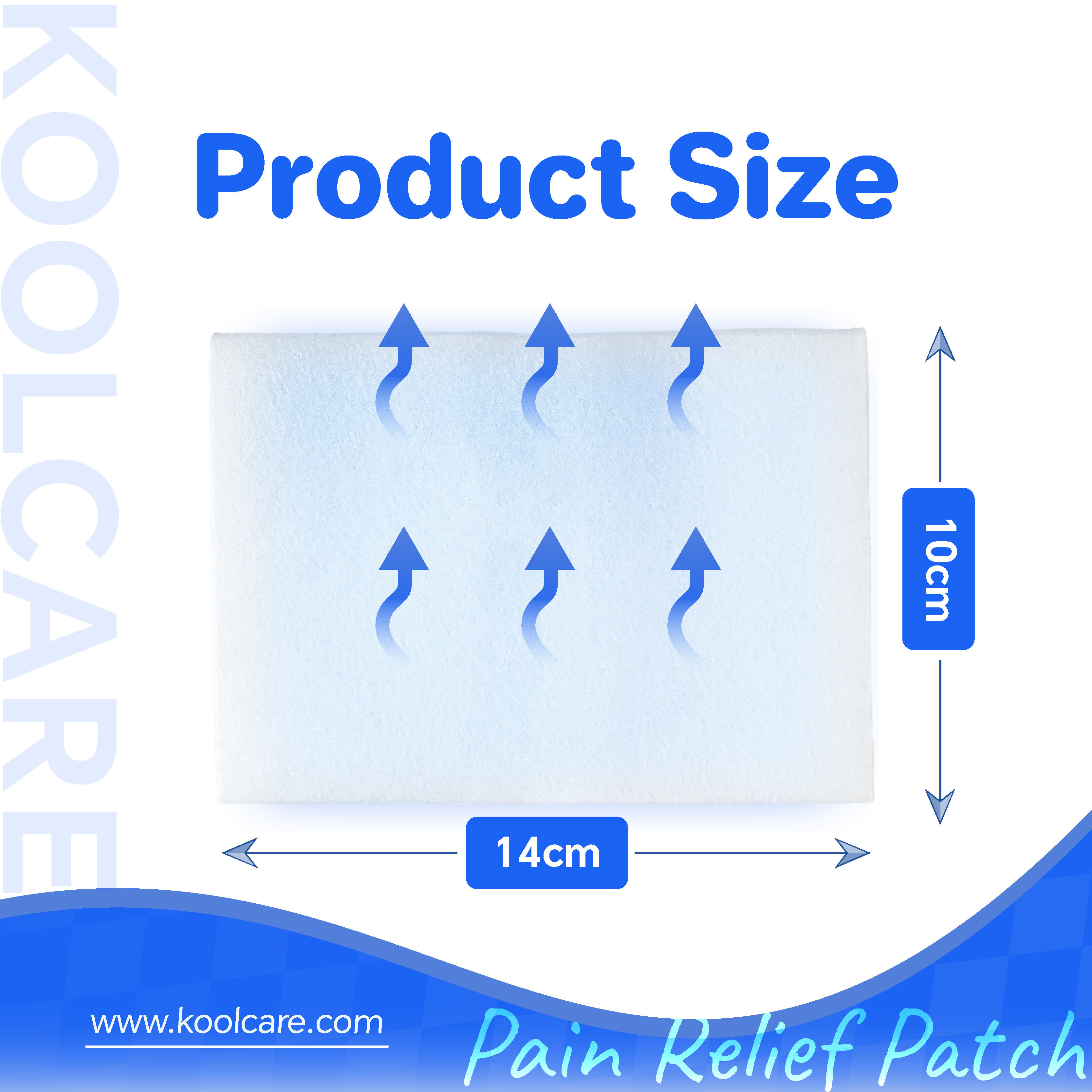What Is a Pain Relief Patch and How Does It Work?
Managing pain is one of the most common health challenges faced by people around the world. From muscle soreness after exercise to chronic conditions such as arthritis, pain affects quality of life and productivity. While oral medications are often used, they can sometimes bring unwanted side effects or interact with other treatments. This is where alternatives such as the pain relief patch have become increasingly popular. A pain relief patch is designed to deliver targeted relief directly to the affected area in a convenient, non-invasive way.
This article provides a comprehensive overview of what a pain relief patch is, how it works, the types available, and the benefits and limitations of using one. By the end, you will have a clear understanding of how these patches can play a role in effective pain management.
What Is a Pain Relief Patch?
A pain relief patch is a medicated adhesive patch applied to the skin at the site of discomfort. The patch delivers active ingredients either locally, to the tissue beneath the skin, or systemically, into the bloodstream. Unlike oral medications that affect the entire body, a patch provides a concentrated dose where it is most needed.
Pain relief patches vary in size, shape, and formulation. Some are designed for short-term use, lasting only a few hours, while others provide extended relief over 24 hours or longer. They are discreet, easy to use, and can be worn under clothing without interfering with daily activities.
How Does a Pain Relief Patch Work?
The effectiveness of a pain relief patch comes from its transdermal delivery system. This means that the active ingredients penetrate the skin and reach the targeted tissues or bloodstream. The skin is made up of layers that act as a barrier, but patches are designed with specialized formulations that allow drugs or natural compounds to pass through effectively.
Once applied, the patch releases its ingredients gradually over time. This provides steady relief rather than the peaks and valleys associated with oral medication. Depending on the ingredients, the patch may work by numbing nerve endings, reducing inflammation, improving blood flow, or altering pain signals in the nervous system.
Types of Pain Relief Patches
Cooling Patches
Cooling patches often use menthol or camphor to create a cooling sensation on the skin. This effect numbs the nerves and reduces the perception of pain. They are commonly used for muscle strains, bruises, or minor injuries where inflammation is present.
Heating Patches
Heating patches work by generating warmth, either through ingredients such as capsaicin or by activating natural heat-producing reactions. Heat relaxes muscles, improves circulation, and relieves stiffness. They are especially effective for back pain, arthritis, and menstrual cramps.
Medicated Patches
These patches contain active drugs such as lidocaine, diclofenac, or other nonsteroidal anti-inflammatory drugs (NSAIDs). By delivering medication directly to the affected area, they reduce pain and inflammation more effectively than non-medicated options.
Herbal or Natural Patches
Herbal patches are made with natural ingredients such as arnica, ginger, or traditional medicinal herbs. They are popular among people seeking holistic remedies and are often used for minor aches and stress-related pain.
Prescription Patches
In cases of severe or chronic pain, doctors may prescribe patches containing stronger medications, including opioids or other prescription drugs. These patches must be used under strict medical supervision due to the risk of side effects or dependence.
Benefits of Using a Pain Relief Patch
Targeted Relief
Unlike oral medications that circulate through the entire body, a pain relief patch delivers ingredients directly to the site of pain. This targeted approach provides faster and more effective relief.
Continuous Release
Patches are designed to release medication gradually, ensuring consistent relief over hours or even days. This avoids the fluctuations associated with pills or injections.
Convenience
Applying a patch is simple and discreet. Once in place, it requires little attention and does not interfere with daily routines.
Fewer Systemic Side Effects
Because patches deliver medication directly to the affected area, they often require smaller doses than oral drugs. This reduces the risk of side effects such as stomach irritation or liver strain.
Non-Invasive
Pain relief patches are applied externally, making them non-invasive compared to injections. They are safe, easy to use, and suitable for people who prefer to avoid oral or injectable treatments.
How to Use a Pain Relief Patch Effectively
To maximize the benefits, patches should be applied to clean, dry skin. Avoid placing them on broken or irritated skin. The patch should adhere firmly and remain in place for the duration recommended by the manufacturer or healthcare provider.
It is important to follow the usage instructions carefully. Overusing patches or applying them incorrectly can reduce effectiveness and may cause skin irritation. For medicated or prescription patches, it is critical to adhere to dosage guidelines to avoid side effects.
Conditions That Can Benefit from Pain Relief Patches
Pain relief patches are used for a wide range of conditions. These include muscle pain and strains from exercise or overuse, joint pain caused by arthritis, menstrual cramps, back pain, neck and shoulder stiffness, and localized chronic pain conditions. Post-surgical patients or those recovering from dental procedures may also benefit from using patches to manage swelling and discomfort.
Limitations of Pain Relief Patches
While pain relief patches are highly effective in many cases, they are not a cure for underlying health problems. They provide symptom relief but do not address the root cause of pain. Individuals with persistent or unexplained pain should consult a healthcare professional for proper diagnosis and treatment.
Some people may experience skin irritation or allergic reactions to adhesives or ingredients. Medicated patches, especially prescription ones, carry risks of side effects or dependency if not used properly. Cost can also be a consideration, as certain patches may be more expensive than traditional medications.
Research and Effectiveness
Studies support the effectiveness of pain relief patches in treating both acute and chronic pain. Clinical research shows that transdermal delivery of medications like lidocaine or NSAIDs reduces localized pain effectively while minimizing systemic side effects. Surveys also suggest that many patients prefer patches due to their convenience and long-lasting effects.
Future Trends in Pain Relief Patches
Advances in medical technology are leading to new and improved pain relief patches. Innovations include smart patches that release medication in response to body temperature or activity, patches that monitor skin conditions, and biodegradable materials that reduce environmental impact. As research continues, patches may become even more tailored to specific conditions and individual patient needs.
Conclusion
A pain relief patch is a simple, effective, and convenient tool for managing discomfort. By delivering active ingredients directly to the site of pain, patches provide targeted and long-lasting relief while minimizing systemic side effects. With options ranging from cooling and heating patches to medicated and natural alternatives, there is a suitable patch for nearly every type of pain.
Choosing the right pain relief patch involves considering the type of pain, location, duration of relief needed, and personal preferences. While they are not a replacement for medical treatment in serious cases, patches are an excellent complement to other pain management strategies. Their accessibility, ease of use, and effectiveness make them a valuable part of modern healthcare and self-care.
FAQ
What is a pain relief patch used for?
It is used to relieve pain from conditions such as muscle strains, arthritis, menstrual cramps, and chronic localized pain.
How does a pain relief patch work?
It works through transdermal delivery, allowing active ingredients to pass through the skin and target affected tissues or enter the bloodstream.
Are pain relief patches safe?
Most over-the-counter patches are safe when used as directed. Prescription patches should be used under medical supervision due to stronger medications.
Can I use a pain relief patch every day?
Yes, many patches are designed for daily use, but it is important to follow product instructions and consult a healthcare provider for long-term use.
Do pain relief patches have side effects?
Some users may experience skin irritation or mild allergic reactions. Medicated patches can have additional side effects if misused.
Table of Contents
- What Is a Pain Relief Patch and How Does It Work?
- What Is a Pain Relief Patch?
- How Does a Pain Relief Patch Work?
- Types of Pain Relief Patches
- Benefits of Using a Pain Relief Patch
- How to Use a Pain Relief Patch Effectively
- Conditions That Can Benefit from Pain Relief Patches
- Limitations of Pain Relief Patches
- Research and Effectiveness
- Future Trends in Pain Relief Patches
- Conclusion
- FAQ

